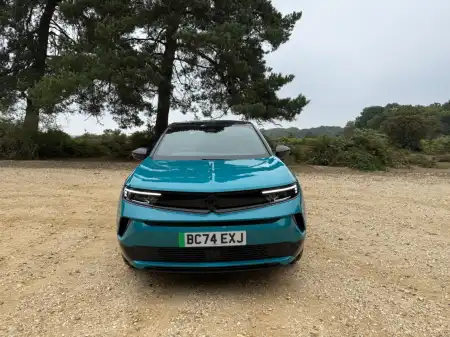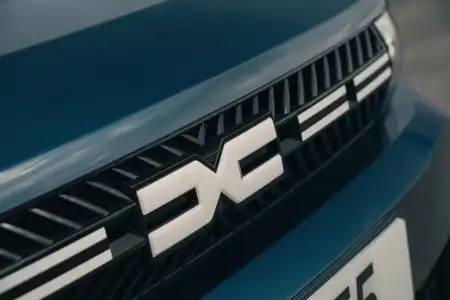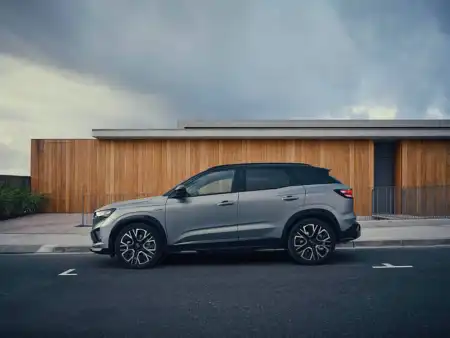- Refined ride even when empty
- Impressive cabin — if you pick a few options
- Versatile and capable cargo area
- Can get pricey
- 4Motion isn’t for rugged off-roading
- Frequent servicing required
Introduction
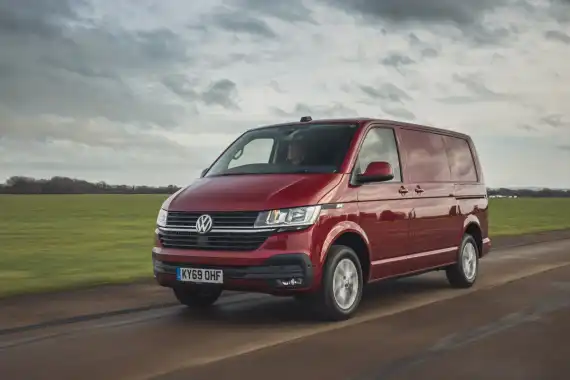
The current generation Volkswagen Transporter, introduced in 2106, can trace its roots back to 2003, but despite its apparent age, it’s still very much a modern van that stands up in comparison to any of the latest models on sale. The most recent upgrades came in 2019, bringing it right up to date, with the option of a digital cabin and drive from a frugal, sporty or even electric powertrain.
In its most basic diesel-fueled panel van form — you’ll find the Transport underpinning everything from a chassis cab to a campervan — there seems to be a model for every use. It’s available with the choice of two body lengths, four engines, three gearbox options and even front or four-wheel drive.
Living With The Volkswagen Transporter
The cabin of the Transporter is neat and orderly, making it an efficient place to work from. The dashboard lacks much in the way of excitement, but the layout is logical. There’s an effective 6.5-inch infotainment screen in the centre, with a clear, crisp screen and reasonably up-to-date controls, but it’s a little small — the 8.0-inch option fitted to our test van looks much more appealing, especially with its smartphone-like glossy screen. Whatever the size, Apple CarPlay and Android Auto are both available, with a wireless option for the latter.
The driving position in the Transporter is good, although there’s no height adjustment on the seat belt, so some might find the belt rubbing into their neck a little. The driver’s seat has an armrest and a cupholder above the instrument panel, so you can relax as you make your way along the motorway. There’s a two-person bench seat for passengers, although the seat nearest the driver is a little less spacious thanks to the dash-mounted gear lever that eats into knee space, although that’s a common problem among many vans.
If you opt for the Startline trim, be prepared for a slightly noisier ride; the Highline trim we have on test benefitted from extra soundproofing, toning down both road and engine noise.
Power comes from a 2.0-litre diesel engine (apart from in the electrically driven e-Transporter) with power outputs ranging from 90hp to 204hp. Even the lower-power model produces a hefty slug of torque, with 220Nm on tap, but that pales into insignificance against the 450Nm available in the most powerful model.
For city-based driving, the lower-powered vans will be absolutely fine, but if you’re heading further afield and want just a little more pulling power, then the step up to the 110hp model will be worthwhile.
Gearboxes are limited to five-speed manual in the lower specs, rising to six-speed manual in the mid-range models and above. A seven-speed automatic gearbox is an option on higher-power models.
Manoeuvring around town and parking is made easy, thanks to the electrically assisted power steering, but build up some speed, and it gains plenty of resistance, producing a sense of stability. The suspension provided a reasonably smooth ride when the cargo bay was empty, and was better than the Ford Transit Custom. Adding some weight to the back made it even more compliant.
The 4Motion four-wheel drive system is available on the 150hp and 204hp models. Thanks to a dry week and living in the flatlands of the East, we couldn’t test its full capabilities, but it’s the same system found on countless other Volkswagen models where it’s frequently proven its worth. However, the Transporter 4Motion doesn’t have any higher ground clearance and sticks with road tyres, so it’s not really going to cut the mustard when tackling tough terrain, even with a locking diff. Still, it’ll get you through a slippery building site, but if you’re going to be staying on the tarmac, then you’re perhaps better off saving the £3,000 or so and sticking with the regular front-wheel-drive version.
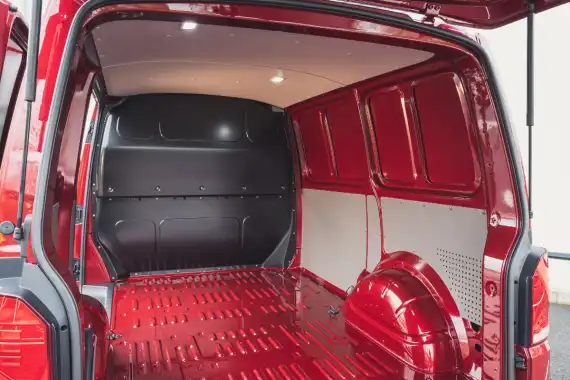
Space & Practicality
The short-wheelbase Transporter with 4Motion all-wheel-drive system has a capacity for 1,040kg of cargo in the back, which increases to 1,165kg if you sacrifice the 4x4 drivetrain. The 150hp model stretches that a little further to 1,218kg. At the other end of the scale, the 90hp model has a gross vehicle weight of 2.3 tonnes, meaning just 688kg of load space remains available.
The 40cm of extra length in the long-wheelbase models gives an extra 0.9m3 of load volume over the short-wheelbase version, taking it from 5.8m3 to 6.7m3. For models with a high roof option, that adds 54cm to the load height and gives up to 9.3m3 of cargo volume, but that does eat up around 60kg of payload weight thanks to the extra metalwork.
Access to the cargo area is via an upward swinging tailgate (although side-hinged doors are available as an option) and a sliding side door, both of which are wide enough for a Euro pallet, two of which will fit in the short-wheelbase model and three in the long-wheelbase version.
There might be plenty of storage in the back, but it is more limited in the cabin. Only the glovebox provides covered storage, so keeping larger items of value out of sight is a problem. There are document-sized trays on the top of the dashboard, but these aren’t covered either, leaving them on display and, more problematically, reflecting on the windscreen while driving.
Ownership
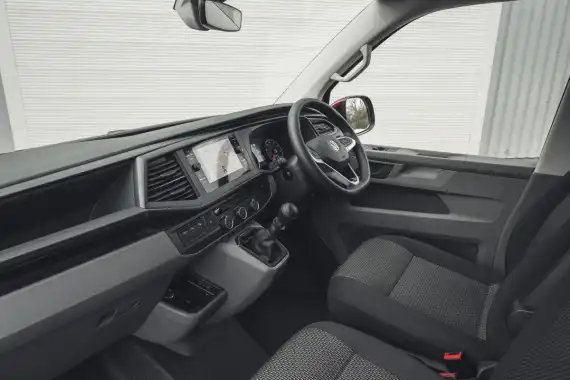
Running Costs
At first glance, the Volkswagen Transporter might look expensive, but considering the competitive running costs and low depreciation, it becomes more palatable. Over around three years and 60,000 miles, the Transporter is among the cheapest vans to operate.
Fuel economy is broadly similar across the whole Transporter range, as they’re all fitted with the same engine, just in a different state of tune. It archives its best of 40.4mpg for the Startline model. The 204hp model with 4Motion will, of course, be more thirsty, giving just 34.0mpg on average.
Keeping the 13-litre AdBlue tank topped up every 4-5,000 miles will avoid unnecessary maintenance costs and downtime, and there’s a three-year, 100,000-mile warranty which, while not as long as some rivals, should see you through if you’re on a lease plan, and as long as you have the van serviced regularly, costs should be reasonable overall.
Verdict
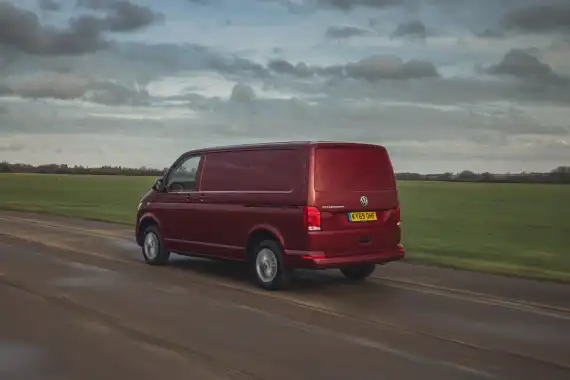
Volkswagen has been producing the Transporter in one guise or another since 1949, and it is still a strong choice more than 70 years on. Those decades of experience have been used to create an impressive all-round van that still holds its own at the top of the class.
It has a broad appeal, and is as much at home on a building site as it is on a beach, and that’s what fuels its popularity. Lease costs are competitive, as it holds its value well, which keeps the monthly fees a little lower, and total life costs compare favourably to competitors like the Ford Transit Custom.
The Volkswagen Transporter might not be the best option in all circumstances compared to the Transit Custom, but it’s such tiny margins that the lower total cost of ownership might just be enough to swing the needle in favour of the Volkswagen.

